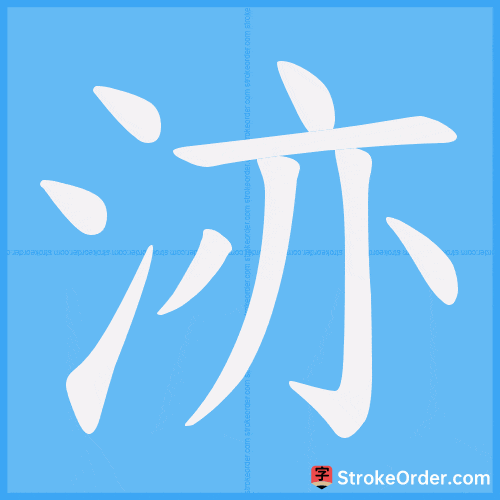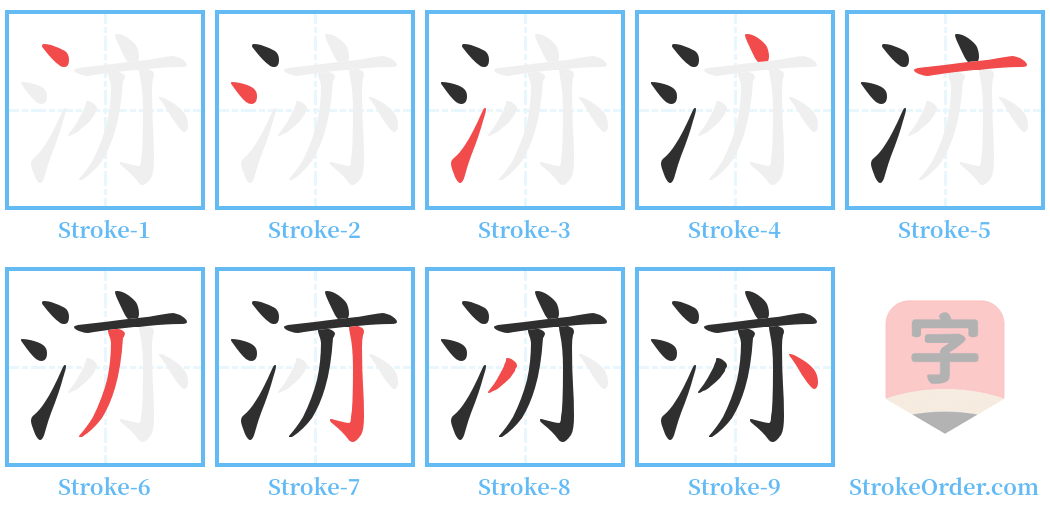洂 Stroke Order
Animated Stroke Order of 洂

Stroke Order Diagrams for 洂

Information of 洂
Pinyin
yè
Radical
氵
Strokes
9 strokes
Usage
★★
Definition
Definition of 「洂」:
1. Anciently the same as "液" (liquid).
2. A surname.
The form that resembles the state of water (the flowing objects) is the paradigm of liquid. The primary meaning: fluids produced and circulated within the bodies of animals and plants.
Examples include: tear fluid (a colorless and transparent liquid secreted by the tear glands); gastric fluid; body fluid; saliva; solution.
Non-solid substances within animal or plant bodies.
Freezing and melting; liquefaction. “Fish are like the fluid of ice; it does not change its stored form.” — From "Wenzi".
Soaking. “For the bow, winter disassembles it dry and spring liquefies its horns.” — From "Zhou Li".
Moistening. “When nourishing fluids seep, how can life not reproduce?” — Han Dynasty, Sima Xiangru, "Fengshan Wen".
Leaking. “Wooden vessels are leaky, metallic vessels have a peculiar smell; the sage drinks from the earth and eats from the earth, thus he molds clay to make vessels.” — From "Weiliaozi".
1. Anciently the same as "液".
2. A surname.